The B2B Sales Strategy Roadmap
No matter how many houses a construction company builds, they use a blueprint each and every time.
Similarly, no matter how long you’ve been in sales, you and your team need a solid B2B sales strategy to approach prospects and close deals effectively.
Without a solid strategy, you never know which of your efforts are producing and which successes are due to pure luck. Each prospect and contact is different, but how you structure your approach doesn’t have to be. Once you have a roadmap for B2B sales success, your sales process can deliver consistent results—without the headaches.
This guide is here to serve as your roadmap. I’ll cover all the basics of B2B sales, from recent changes in the industry to the steps you should take to build an incredible B2B sales strategy that truly delivers.
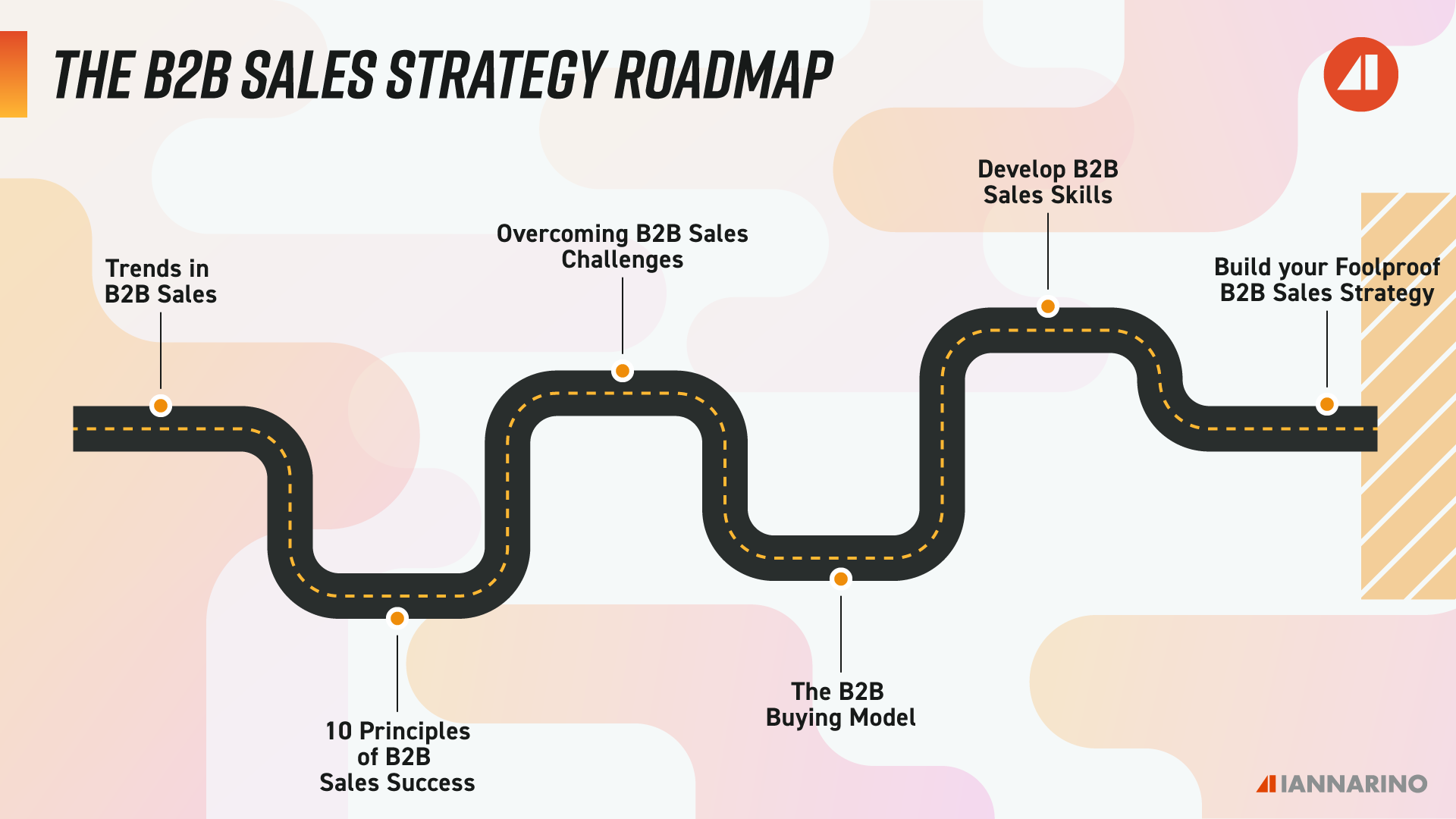
Trends in B2B Sales
Sales is challenging in any industry, but B2B sales have unique challenges that set it apart from other industries. Before we dive into the details of my roadmap for B2B sales success, let’s first look at some of the challenges you’ll face in B2B sales.
You’ll struggle with challenges like getting a meeting, creating value, gaining access to the right contacts in your dream client’s organization, and more. All in all, B2B sales can be a tricky field to find success in. It is only getting more difficult as prospective clients’ budgets get tighter and their schedules get fuller. The old playbook doesn’t work anymore: You need to meet the new qualifications of B2B sales to succeed.
The new qualifications for B2B sales are:
- Delivery Model Fit:
Your delivery model creates more value than your competition, but your client needs to pay more than they’re currently investing to get that value. You know this: Does your client? Share this information early in the conversation to ensure a fit between your offering and their budget. - Client Effort:
You aren’t just a salesperson: You’re your client’s partner in success. Ensure your prospective clients are willing and engaged partners in improving their business using your solution. When your contact with the client isn’t as engaged in the solution as you are, you have a recipe for trouble. - Facilitating the Buyer’s Journey:
A client who rejects your advice and recommendations is not likely to complete their journey in a way that ends with them implementing a solution that will get them the results they need. Work to ensure your clients have the right conversations with the right people at the right time. - Access to Leadership:
To close your sale, you need access to their leadership team. To get access, you must impress every contact you have access to within the company. The larger the deal, the more you will need support from a company's leadership team. No access means you have a future obstacle. - Willingness to Engage:
You need access to some part of your prospective client’s organization. If they won't allow you to speak to stakeholders who need to sign off for your proposed solution to move forward, it's difficult to win that deal.
This guide will give you the tools and tips you need to meet the new qualifications I’ve laid out here and more, allowing you to crush your sales targets, book more meetings, and close more deals.
What To Strive For: 10 Principles of B2B Sales Success
You came to this post looking for the key to success in your B2B sales efforts. But how can you know what “success” is if you haven’t first established your ideal finish line? KPIs are important, but your finish line should be about more than numbers.
Let’s establish some of the principles you should follow to be worthy of success in B2B sales:
- Be Other Oriented:
You will struggle if you go into a sale looking to benefit yourself. Your client will sniff out your self-oriented motives, creating resistance. The more you focus on improving your client’s situation, the easier you make selling.
- Create Value in Every Interaction:
The worst thing you can do for prospective clients is waste their time. Make your meetings so valuable to your clients that they will pay you for consulting, and you’ll never have trouble booking another meeting.
- Control the Process:
During the prospecting process, you’re trying to sell a meeting. If your planning process stops here, you’re in trouble. Control the flow of the process throughout. Never leave a meeting without first scheduling another meeting.
- Establish Credibility through Demonstration:
Your client won’t believe you can offer them something of value unless you prove it. Demonstrate your knowledge of business acumen, situational knowledge, and intangibles in every conversation and every meeting to prove you’re the real deal.
- Sell Strategic Outcomes:
When you make a cold call or enter a meeting, you’re not selling a product or a service: You’re selling the outcome. Zero in on a pain point your prospective client is struggling with and show them how you can offer them the solution.
- Engage in Difficult Conversations:
No one likes difficult conversations. However, if you aren’t willing to get a little uncomfortable, you aren’t worthy of earning your prospective client’s trust. Ignoring issues is a lie of omission; you must be honest to win their business.
- Help Manage Change:
Change is challenging for most people. But in sales, we’re in the “change” business! Every time we sell a client a new solution, we instigate change in their organization. Hold yourself accountable for helping your client manage change to get the best results possible.
- Plan Long-Term:
Another principle of B2B sales is to plan for the long term. The desire for quick wins often fails. You won’t go from floundering to crushing every KPI overnight. Focus instead on steady progress over time.
- Change Beliefs and Behaviors:
Building a sales team and practicing B2B sales have a few things in common: This is one of them. You’ll need to be able to displace long-held beliefs with new and uncomfortable ideas. Becoming comfortable with changing behaviors in your work will help you encourage the same behavior in your prospective clients. Engage in sales training with your team to hone your skills and get comfortable making positive changes when needed.
What To Overcome: B2B Sales Challenges
B2B sales is a complex puzzle requiring you to rise to challenges and counter them. Let’s examine the nine top problems you may struggle with in B2B sales.
1. Getting a Meeting:
To make a sale, you first need to get a meeting. This is the stumbling block that often trips up most sales professionals. The trick to getting a meeting is to offer your prospective client value they can’t deny in your very first conversation. Offer them resources and information they’ll find valuable. The trick to winning is understanding your client enough to know what they’ll find valuable enough to trade for a meeting.
2. Compelling Change:
Sales is a zero-sum game. To win new clients, you need to convince them to leave their current solution and adopt yours. You'll find more resistance if you go into every conversation, assuming your prospective clients are already unhappy with their current solution. You’ll have better luck if you create a compelling theory on how changing to another solution can produce better results regardless of how satisfied or dissatisfied they are with their current solution.
3. Differentiating Yourself:
If there’s one thing the modern era isn’t short on, it’s choice. Differentiating yourself is essential if you want to succeed. Cultivate relationships with your prospective clients by providing them value. This practice will give them a preference for working with you—and your solution.
4. Creating Value in Discovery:
Discovery shouldn’t just be for you: It should be for your client’s benefit. Simply asking, “what’s keeping you up at night?” isn’t enough anymore. Before making the call, you should understand what’s keeping them up at night. Dig deeper during your conversation, asking questions and providing insights that make your clients pause and say, “that’s a great question.”
5. Identifying the Ground Truth:
The problem your client shares with you isn’t really the problem. Or, rather, it isn’t the whole problem. The root cause of their troubles is something far deeper than the surface-level problem your client is likely trying to solve. Identifying and attacking the root cause—the ground truth—is the only way to truly provide your client with lasting value.
6. Gaining Access to Necessary Stakeholders:
Understanding who the decision-makers and stakeholders are in your target customer is a challenge in itself. The last thing you want to do is spend several meetings forming a relationship and winning over one person only to learn, inches from the close, that another stakeholder (or five) needs to weigh in on the decision before they can pull the trigger. Have open and diplomatic conversations with your contacts early and often to ensure everyone who needs to weigh in is included in the conversation.
7. Gaining Consensus:
In B2B sales, one person rarely makes decisions: They’re made by consensus. Getting multiple stakeholders to agree on your solution is another major challenge in B2B sales. How do you create a solution that works for end users, ancillary stakeholders, management, and executive leadership? What adjustments must you make? What will you need from the stakeholders to reach an agreement?
8. Obtaining the Right Investment:
Your clients have budgets. Not every client will be able to invest in your top-of-the-line solution. Determine the necessary budget to produce the result your client wants to achieve. Then, be prepared to have difficult conversations if that figure doesn’t match their desired budget.
9. Executing the Solution:
Once you sell your client the outcome you’ve created for them, it’s your job to help them execute the solution to its maximum effectiveness. The challenge is twofold. First, you have to position your team to succeed for the client. Then you must make sure your new client holds up their end of the bargain, making the changes that will result in better outcomes.
What You Need To Know About The B2B Buying Model
The B2B buying model is different from your average B2C buying model. To sell effectively in the B2B space, you need to understand the steps required for your clients to make a purchase and implement your solution.
The B2B buying process follows five steps:
1. Recognizing a Need:
The first step of your prospective client’s journey is recognizing they have a problem. A trigger or pain point can create this moment of discovery, or you can illustrate the problem to your client during your early conversations. Essentially, this stage of the process makes the client understand that their current solution is lacking in some way.
2. Evaluating Solutions:
Faced with a problem, your prospective client will begin evaluating possible solutions. They are not yet considering specific suppliers at this stage, as many stakeholders in their organization may still be unconvinced that a purchase is necessary. At this stage in the buying process, you’re not only competing with your usual competitors but also solutions like home-grown fixes and in-house process tweaks.
3. Defining Necessary Features:
Once everyone in the organization is on board for finding a third party to help them solve their problem, they need to establish defining requirements for the product or service they eventually invest in. Some considerations at this stage include:
- Performance requirements
- Cost
- Company-specific issues
4. Selecting a Supplier:
After the client has pursued all the above steps, they will consider suppliers. At this stage, they will gather information about all the possible vendors or suppliers for their chosen solution. You should take this opportunity to differentiate yourself and make your solution shine.
5. Justifying the Decision:
Even after the sale, the buying process is not complete. Your client will need to justify their purchase after the fact, both to themselves and to other stakeholders in their organization. The justification stage is why it is so critical to follow through with your new client all the way through their implementation process, ensuring that they are using your solution to its fullest potential.
Finding success in this long, stakeholder-strewn process can feel overwhelming, if not impossible. Thankfully, I have some tips for you. To successfully navigate through the B2B buying model, you need to do three things: Get out of your own way, understand what your buyers are getting wrong, and determine the best way to change their minds.
To get out of your own way, you should ensure you’re not talking over your prospective clients. Give them space to speak in your conversations and give them space to converse with other stakeholders in their organization between calls. Don’t rush them to commit. Remember: Your contacts aren’t simply trying to buy something; they’re making a series of decisions that will impact their organization’s future.
My next tip is to make sure you understand what your buyers are getting wrong. This tip connects with the very first step in the B2B buying process. Sometimes a trigger will show your client what they’re getting wrong. Sometimes you need to be that trigger for them.
Lastly, you need to know how to change your buyer’s mind. The most effective way to change your client’s mind is by helping them understand why they are experiencing the problems or challenges that have caused them to consider a change. You should also help them understand how to make the best decision and deepen their understanding of the factors they must consider when choosing a partner and a solution. To win the client’s business, you need to prove you are the perfect partner for them by demonstrating it throughout the sales conversation.
What B2B Sales Skills You Need to Develop
Unfortunately, there is no magic bullet solution for killing it in B2B sales. If you want to be a top performer, crush your targets, and close more deals, you must commit to developing and honing your sales skills to the best of your ability. You can go about this process in a few ways.
Adjust Your Mindset
The first thing you need to do to level up your B2B sales skills is to adjust your mindset. By this, I mean you need to adopt a business mindset perfect for B2B sales. What is the ideal B2B sales mindset? An ideal B2B mindset is the mindset of a lifelong student.
It’s challenging to be a B2B salesperson without being a businessperson. The larger and more complex your deals become, the more a lack of business knowledge and understanding will constrain your success. You need to embrace business learning to succeed long term.
How can you develop a business mindset? You can go one of three ways—or you can fully embrace your new mindset and try all three methods.
1. Pursue a Side Hustle:
The best way to learn is by doing. What better way to learn about business than to start one of your own? Starting your own micro-business will show you the inner workings of the business's financial structure. This knowledge will allow you to be more informed and conversational in business, helping you relate to your prospective clients. In short, as a businessperson, you will learn to think like one, which will help you become a better B2B salesperson.
2. Watch Business News:
Choose a business news segment you enjoy and commit to watching it each morning. Alternately, you can follow influential business leaders on social media, check out business-themed YouTube channels, and more. As long as your knowledge comes from a legitimate source, you’ll absorb fascinating information about the business world that will help you engage with your prospective clients.
3. Leverage Internal and External Resources:
If you work for a company, you have no shortage of internal experts at your disposal. Ask a finance employee to help you examine a prospective client’s financial report, or ask an HR rep about the challenges of acquiring or retaining talent. Ask employees in other areas of your company to lunch and learn what their day-to-day looks like. These steps will help you gain concepts and vocabulary.You can also ask existing contacts for help. Ask if they would mind answering some questions that would help you be more valuable to them in the future. An easy way to start this conversation is to ask what metrics are most important in their role or industry, how they measure those outputs, and what causes them to improve or decline.
Read B2B Sales Books
You’ve adjusted your mindset to embrace the energy of a businessperson and a lifelong learner: What’s next? The header here likely gave away that it's to learn even more by reading books on B2B sales. Reading B2B sales books can help you learn from the mistakes and successes of B2B sales professionals who came before you.
Let’s take a look at nine of my favorite books for new B2B salespeople.
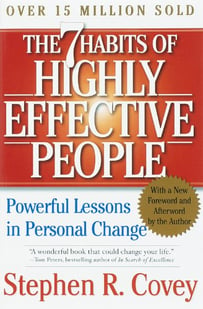 The Seven Habits of Highly Effective People (by Stephen Covey)
The Seven Habits of Highly Effective People (by Stephen Covey)
I personally believe this book should be required reading for anyone, regardless of profession. You are at the heart of all your challenges. Covey’s seven habits will help get you out of your own way to succeed in sales and human relationships in general.Mastery (by George Leonard)
This little book is written by a 5th-degree aikido master (one of the most frustrating and difficult martial arts to learn). Mastery will help you understand how to survive the struggle of the plateau (where it feels like you aren’t making progress) long enough to achieve your next breakthrough.
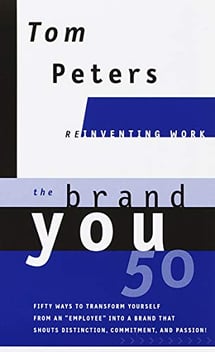 The Brand You 50 (by Tom Peters)
The Brand You 50 (by Tom Peters)
This book is small but jam-packed. The book is filled with ideas and checklists to help you frame your thinking. You can learn how to become someone worth doing business with and someone worth buying from. You can work on the action items in this book for months—maybe years.
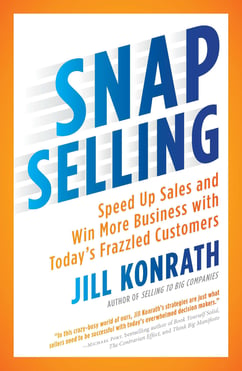 SNAP Selling (by Jill Konrath)
SNAP Selling (by Jill Konrath)
Getting in the door is the greatest struggle for most salespeople, even experienced salespeople. Jill’s book has some simple rules to follow that can make it easy for your dream clients to say “yes” to a meeting request. Jill covers four rules: keeping it simple, being invaluable, aligning with your dream client’s objectives, and keeping up the momentum by focusing on priorities.
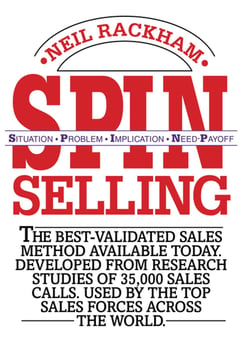 SPIN Selling (by Neil Rackham)
SPIN Selling (by Neil Rackham)
I believe this is one of the most critical business-to-business sales books ever written. The acronym stands for situation questions, problem questions, implication questions, and needs-payoff questions. Overall, SPIN provides a formula to help you diagnose your clients’ needs. This book will improve your needs analysis and make you a more valuable partner in your dream client’s improvement.
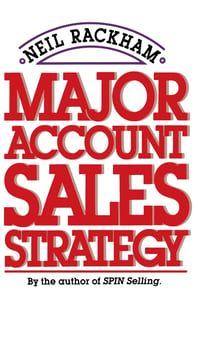 Major Account Sales Strategy (by Neil Rackham)
Major Account Sales Strategy (by Neil Rackham)
This book is the follow-up to SPIN Selling. Where SPIN selling provides a formula for need diagnosis, this book is more about the strategies and tactics of winning major accounts.
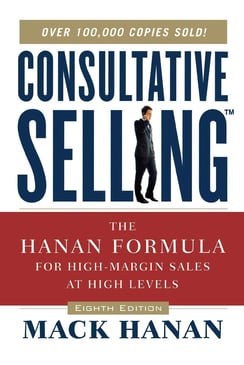 Consultative Selling (by Mack Hanan)
Consultative Selling (by Mack Hanan)
Mack provides a recipe for success, but it can be challenging to execute properly. Consultative selling isn’t about being soft or about not selling. Instead, you must focus on shifting the decision criteria from price to cost. This book helps you make that shift for yourself and your prospective clients.
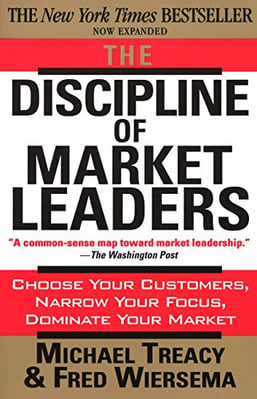 The Discipline of Market Leaders (by Michael Treacy and Fred Wiersema)
The Discipline of Market Leaders (by Michael Treacy and Fred Wiersema)
You need solid business acumen to create value for your clients. This book is an excellent primer on business strategies. Understanding your clients’ strategies helps you better understand what drives their needs and their decisions.
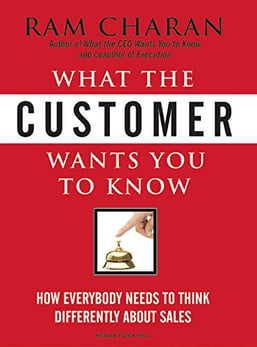 What the Customer Wants You to Know (by Ram Charan)
What the Customer Wants You to Know (by Ram Charan)
Charan’s book helps you learn how to use your business acumen to create value. In some ways, it is very similar to Consultative Selling but focuses more on demonstrating cost savings.
How To Build a Foolproof B2B Sales Strategy
Armed with all the base knowledge I’ve shared in this guide, it’s time for you to create your own foolproof B2B sales strategy. Without a proven strategy, you’ll have difficulty getting consistent results from your B2B sales efforts. Even if you already have a strategy in place, it may be time to construct a new one, as even the best strategies can become stale over time. A strategy based on legacy sales approaches won’t be effective in a modern sales environment.
To build a successful, modern B2B sales strategy, you’ll need these three competencies for B2B sales:
- Business Acumen and Insights:
It doesn’t matter how much experience you have or how well-known your organization is; if you can’t demonstrate to your clients that you have the insights they need to improve their business, you’ll be facing an uphill battle. Offering an incredible solution is all well and good, but your business acumen and insights are what will ultimately have the greatest impact on your client’s choice to partner with you. - Building Consensus:
Remember, you’re not selling a product or service; you’re selling change. Organizational change requires organizational consensus. If you’re approaching B2B sales without addressing the necessity to combine the needs and opinions of multiple stakeholders, you will not succeed in the modern B2B environment. - Agile Sales:
Legacy sales methods assume the buying process is a straight line. Modern sales don’t work that way anymore. Your strategy needs to be dynamic and agile, allowing you to maneuver through an increasingly complex environment.
Creating an Insight-Based Strategy
This guide has mentioned the importance of providing value and insights multiple times. Insights guide the modern sales experience and should guide the creation of your B2B sales strategy.
An insight-based sales strategy is founded on one central idea: the salesperson has the necessary experience to create the outcome their prospective client needs. Instead of assuming that your client already knows they need to make a change, this strategy begins by providing the client with insights to better understand their current state and what they must do to improve their results.
The reason insight-based strategies are so effective is that they are client-focused. While a legacy sales approach seems to make the salesperson’s job easier, this strategy is designed to make the client’s life easier, understanding why the client is experiencing poor results.
When you pursue insight-based sales, your conversation starts by answering the question, “why change?” Instead of asking your client to admit they have a problem, you provide them with an explanation for their less-than-optimal results, showing them why they need to switch.
Using the Ultimate Guide for B2B Sales Strategy
With the recent changes in the business landscape and other economic shifts, building and maintaining a solid B2B strategy can feel overwhelming, but it doesn’t need to be. When you arm yourself with the right mindset, skills, and a game plan for success, you can confidently create a bulletproof B2B sales strategy.
Creating the mindset and sales team culture needed to embrace your B2B sales strategy can take time, but with the right map to guide you, you can speed up the process, preparing your team to crush their sales goals and revenue targets with your new sales strategy. Our Revenue Growth Blueprint can be that roadmap for your team.
The Revenue Growth Blueprint takes you through every step of the B2B sales journey, from setting accountability and cadence goals all the way to negotiation mastery. To see how adopting this modern sales approach can help you use your B2B sales strategy to its fullest potential, get the Revenue Growth Blueprint today!






